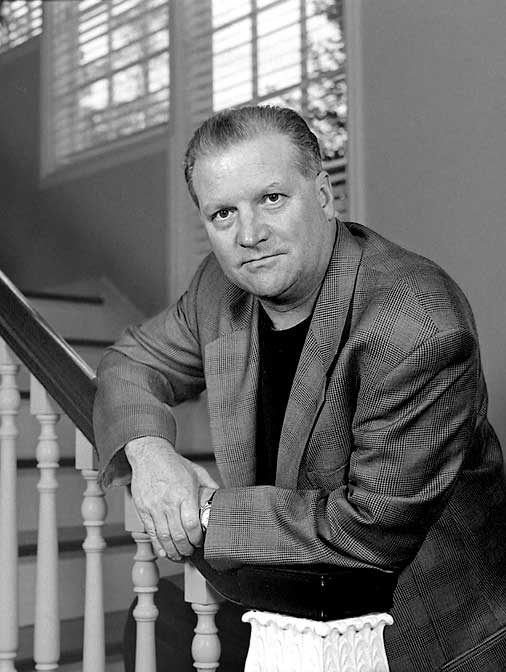Republished with permission from Lucian K. Truscott IV
I’ve been trying to think of another New York trial to compare with the one underway right now in Manhattan—you know, the one that finally empaneled a jury and scheduled opening statements for Monday. Turns out that it isn’t a trial that comes to mind but a defendant, so-called “Teflon Don” John Gotti, because of the number of trials it took to finally get a conviction.
Gotti was tried and acquitted twice in the late 1980’s for racketeering and assault before they got him in 1992. In Gotti’s racketeering trial in 1986, jury tampering by Gotti led to an acquittal on charges of murder, truck hijacking, illegal gambling, and loansharking. Gotti had scored a ringer juror who had lied about his relationship with a leader of the Hell’s Kitchen “Westies” mob to get on the jury. Gotti had his associates pay the juror $60,000. When jury deliberations began, most jurors were for conviction, but when Gotti’s plant held out for acquittal, the rest of the jury became so frightened for their own safety, they ended up voting to acquit Gotti on all charges. Five years later, the paid-off Gotti juror would be convicted of obstruction of justice for fixing the jury verdict. He was sentenced to three years in prison.
The 1992 Gotti trial in Brooklyn was the first New York trial with an anonymous jury that was sequestered for the length of the trial because of Gotti’s history of jury tampering. Using taped conversations from Gotti’s Mulberry Street Ravenite Social Club and testimony by a Gotti lieutenant, Sammy “The Bull” Gravano, who turned state’s evidence and confessed on the stand to 19 murders linking Gotti to four of them, Gotti was convicted by the sequestered, anonymous jury after only 14 hours of deliberation and sentenced to life in prison without possibility of parole. Gotti was repeatedly threatened with expulsion from the courtroom by the judge when he yelled at Gravano and other witnesses accusing them of lying and drug use.
Gotti’s trials got the kind of coverage the trial of Donald Trump is getting—screaming headlines in the tabloids, televised reports outside the courthouse, everything but the kind of wall-to-wall expert legal analysis we get these days on cable news, although former defense attorneys and prosecutors would occasionally be interviewed for their opinions on nightly local news.
What was missing in those days, however, was the overall threat of violence by Trump supporters that hangs over this trial. Fox News has featured a kind of contest for viewers to come up with the identities of anonymous jurors, which has already led to one juror being excused from duty because she feared for her safety after friends and family reported to her that speculation was rife on the internet about her identity. The jurors who acquitted Gotti in his first racketeering trial were afraid for their own safety not because their identities were public, but because remarks in the jury room by Gotti’s secretly-planted and paid-for juror had put them in fear.
Gotti was famous for his thousand-dollar suits and white-on-white tie and shirt combos, and when he wasn’t in pre-trail detention, Gotti put on a show on New York sidewalks, waving to members of the press and the public on his way to and from court. Gotti’s confident demeanor was never about seeming innocent—he wasn’t, and he made no attempt to appear innocent—but to show his power as a mob boss. Everyone in New York knew he was the head of one of New York’s mob families. Everyone knew he had ordered killings and had made a fortune committing crimes large and small.
Donald Trump tries his best to put on the same kind of show when he leaves court every day. His campaign has made no secret of its plan to use his trial as daily campaign appearances.
But Donald Trump is no John Gotti. He’s been cautioned for muttering and gesturing, rather than yelling, and at least three times he has fallen completely asleep at the defense table, chin on chest, head lolling. Outside the court, Trump is not happy and confident. Yesterday, he stood before the cameras waving around a sheaf of print-outs of positive reviews from the day’s news coverage. He rattles off the names of conservative “legal experts,” as he calls them, and “every one of them is outraged,” he assures us, “Jonathan Turley, Gregg Jarrett, Andrew McCarthy—even the Rolling Stone, no friend of mine, they don’t like Bragg’s chances on this case. It’s a disgrace.”
It turns out that Trump has a member of his communications team, Natalie Harp, a former “One America News” anchor whose job, according to a report by Maggie Haberman, is to use a laptop and wireless printer to print out “an ongoing stream of good news from the internet” for Trump. Here she is outside the court with other Trump aides, one of whom is apparently carrying the laptop and shouldering the wireless printer for her.
Here’s where it gets delicious. After Trump waves around his wireless printouts to make sure the press corps is up on his popularity away from New York, which has spit him out like a bite out of a big apple with a worm in it, Trump gives his own review of the day’s proceedings. “It’s freezing in there,” he whines. He needs his blankie:

Lucian K. Truscott IV
Lucian K. Truscott IV, a graduate of West Point, has had a 50-year career as a journalist, novelist and screenwriter. He has covered stories such as Watergate, the Stonewall riots and wars in Lebanon, Iraq and Afghanistan. He is also the author of five bestselling novels and several unsuccessful motion pictures. He has three children, lives in rural Pennsylvania and spends his time Worrying About the State of Our Nation and madly scribbling in a so-far fruitless attempt to Make Things Better.
